Legalization of Paid Surrogacy Will Benefit Many in New York
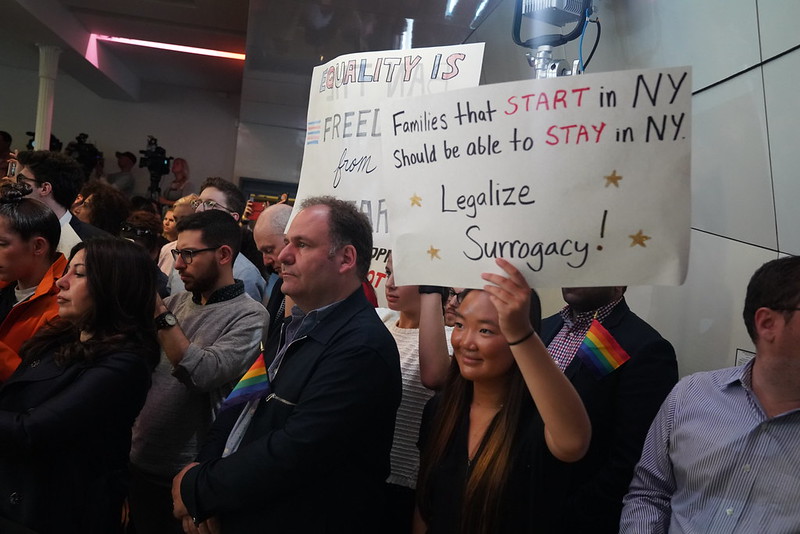
The push to legalize surrogacy in New York was successful this year (photo: governor's office)
The New York Legislature passed its own economic stimulus package when it legalized paid gestational surrogacy in the new state budget. Beginning February 2021, legal professionals will have a new income source by helping couples participate in paid gestational surrogacy. In addition, New Yorkers who qualify as surrogates will be able to receive compensation for carrying a child; in California, qualified surrogates with a successful history of taking a child to term can earn $80,000.
New York went from criminalizing paid gestational surrogacy to enacting the most progressive and comprehensive surrogacy law in the United States. New York is now the only state in the country to have a Surrogate’s Bill of Rights. These are statutory benefits to surrogates that must be provided by the intended parents. For instance, the intended parents are responsible for the cost of the surrogate having her own attorney. The intended parents will be financially responsible for the surrogate’s health insurance premiums during the pregnancy. The surrogate’s health insurance must extend 12 weeks after birth; if there were complications during the pregnancy, the extension of health insurance may be up to 18 weeks. The surrogate would also receive a life insurance policy during the pregnancy paid for by the intended parents and the beneficiary is designated by the surrogate.
By criminalizing paid gestational surrogacy previously, New York made the choice for all women in the state that they could not participate in this type of surrogacy. However, the legalization of paid gestational surrogacy returned to women in New York the right to make choices regarding their own bodies. As part of the Surrogate’s Bill of Rights, the surrogate maintains control of her own health and body: the surrogate can limit the number of embryos transferred into her body; the surrogate selects her own doctor; and, the surrogate is not required to agree to a cesarean section. Most importantly, the surrogate can terminate the pregnancy at any time and for any reason.
The financial implications for women who qualify as a surrogate are monumental. In speaking to a legislative aide to an Assembly member, the aide did not believe that legalizing paid gestational surrogacy would be of interest to his boss’ constituents. In the aide’s mind, such a law was really targeted to help couples who could not procreate on their own but who had the financial means to proceed with paid gestational surrogacy. However, paid gestational surrogacy in New York now permits a surrogate to be paid legally for her services. Thus, a healthy woman with limited financial means who meets the health requirements set forth in the statute now has the ability to change her and her family’s financial circumstances. Paid gestational surrogacy can help a woman help herself and her family out of a bad financial predicament and into a better one. This law is a game-changer for many women in New York.
The legalization of paid gestational surrogacy has provided couples with critical rights as well. Most importantly, upon the birth of the child, the intended parents are immediately recognized as the child’s legal parents. This is critical to same-sex couples utilizing paid gestational surrogacy. The new law further provides that a judgment of parentage may even be issued prior to birth of the child (but only become operative upon the child’s birth). The intended parents become immediately financially responsible for the child. Importantly, the surrogate would have no legal rights to the child. Defining the parties’ roles following the birth of the child is important – especially if emergency medical decisions need to be made regarding the child.
Those who opposed legalization of paid gestational surrogacy claimed surrogates became “Handmaids,” surrogacy enslaved women, and that surrogacy dehumanized women. However, women have not suffered such fates in the 47 other states where paid gestational surrogacy has been legal. Women in New York will now be fortunate to provide a child to parents who cannot bear their own. It is hard to argue with a law that brings the gift of life.
***
Eric Wrubel, Esq., is Chair of the Matrimonial Department of Warshaw Burstein, LLP.
***
Have an op-ed idea or submission for Gotham Gazette? Email This email address is being protected from spambots. You need JavaScript enabled to view it.
Privilege Trumps Priority in Black and Brown Communities, Again
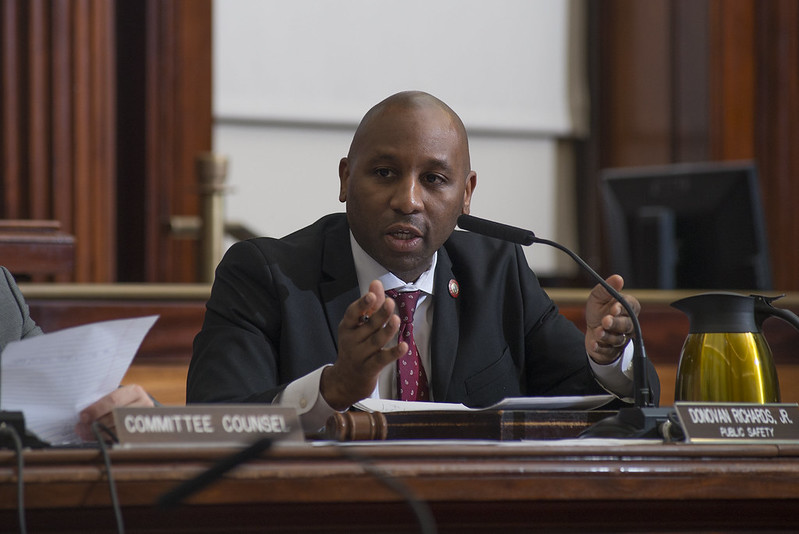
Council Member Donovan Richards, the author (photo: Jeff Reed/City Council)
The lack of coronavirus testing sites in poor communities and particularly communities of color is costing black and brown New Yorkers their lives. There is no clearer example of institutional racism than the different infection and mortality rates during this crisis. It is a scar on our nation and our city. In areas of New York City that already experience the highest rates of asthma, diabetes, and other underlying conditions, this virus has already proven to be a death sentence.
Furthermore, it is people of color who are the essential workers keeping society going in this incredibly challenging time. But as the state and city grapple in the near future with restarting the economy, communities of color already starved for capital because of institutional insidiousness will rebound at a slower pace and face greater challenges.
Proactive measures such as identifying those who have the coronavirus but are asymptomatic and those who are free of the virus will prove critical in flattening the curve in the hardest hit areas of our city and giving us a fighting chance. Every country that has managed this crisis has done so with mass testing. This is step one in rebounding. We must contain the virus to stop the spread, and monitor the virus to turn the corner.
This is why leaders throughout our city are calling on the de Blasio administration to immediately ramp up testing, and it must be done in communities of color first given that so many of our neighbors are those who’ve been commuting to work while so many others stay home.
How is it that neighborhoods from Corona to Southeast Queens to the Rockaways have not one testing site?
We know who has found it is easy to get tested. The wealthy and well-connected, professional athletes, TV personalities, and many others, but sadly average Americans risk their health waiting in line for the limited testing available to less powerful New Yorkers.
We live in the epicenter and we are not testing. The outrage has no words. It is a scandal and it is costing us lives. Imagine if the epicenter were only in Manhattan? We would be testing door-to-door, with federal, state, and city focus unlike what we’ve seen.
Your socio-economic status shouldn’t determine whether you have access to a COVID-19 test. Frankly it shouldn’t determine the quality of your health care. But the reality right now is the difference between life and death.
And while I won’t pretend to be an expert who knows all the solutions for how to defeat COVID-19, I don’t have to be to look at the places that have successfully contained the virus and know what essential steps seem clear. New York should look to Taiwan and Germany, for example, and move quickly to emulate them.
Their successes have largely hinged on effective testing and tracking strategies. The more micro-data we have as a city, the better our chances of defeating COVID-19.
This is why universal testing for all must be taken more seriously by the de Blasio administration. So far the mayor has been reluctant to expand testing, because of a limited supply coupled with his belief that more testing will increase the spread of the virus in neighborhoods due to more symptomatic people traveling outside the home. The argument doesn’t hold up well when hospitals are being overwhelmed by people rightfully showing up at their doors begging to be tested. If you don’t believe me try visiting Elmhurst, Jamaica, or St. John’s Hospitals, among others.
The administration’s wishful thinking and calls for social distancing won’t stem the tide for black and brown communities, who often don’t have the luxury of isolating in a separate bedroom from other family members.
For those of us who grew up or are growing up now in a one-bedroom apartment with several family members in limited space, it isn’t hard to understand that everyone in many households have been compromised when an infected person is instructed to just go or stay home.
This especially endangers our vulnerable seniors, and this is why we must know who is infected but asymptomatic immediately. This can only be achieved through testing.
The bottom line is that without universal testing for all, this pandemic will be slow to recede tremendously in the most vulnerable corners of our city. And while I recognize that the federal government has been a complete failure, I want to see the city and the state do more. It’s good to hear the mayor and governor say widespread testing will be key to reopening schools and businesses, but we need more testing now in our communities of color.
The racial and ethnic data finally released by the de Blasio administration this week showed terrible if unsurprising disproportionate impact in communities of color, and the response from the mayor was welcome but late and short of what is needed. Black and brown communities need testing now.
In the face of the damning racial and ethnic data released by the city and state on Wednesday, the governor’s Thursday announcement that new testing sites in communities of color, including two in Queens, will open next week is welcome, though they will be by appointment only.
Resources such as access to food and rental assistance must also be concentrated in underserved communities. Anything less is not an option, if we want to successfully flatten the curve and save the lives of every New Yorker in our city.
Eventually, when the smoke clears and our city returns to any semblance of normalcy, there will be no shortage of public hearings and legislative packages passed at all levels of government. The government must be focused on demographic data and increase spending to improve the quality of life in low-income communities now and in the aftermath of this crisis.
Otherwise, the city will be incapable of ever stopping the spread of any virus that finds itself in the so-called progressive capital of the world. Because as the old saying goes, when America gets a cold, communities of color get pneumonia.
***
City Council Member Donovan Richards represents parts of Queens. On Twitter @DRichards13.
***
Have an op-ed idea or submission for Gotham Gazette? Email This email address is being protected from spambots. You need JavaScript enabled to view it.
Coronavirus Threatens to Perpetuate Generational Inequality, Leaving Young People Behind Yet Again
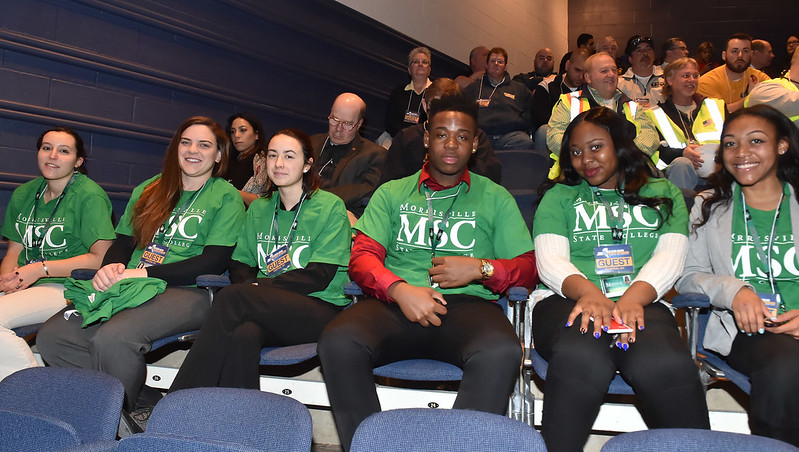
Young people are again in highly precarious positions as the economy crumbles (photo: Kevin P. Coughlin/Governor's Office)
If we have learned anything from the Great Recession just a decade ago, it’s that young adult generations that enter the labor market in an economic downturn are at a serious disadvantage, impacting their ability to successfully launch a career and reach financial security and self-sufficiency like the generations before them. Members of the Millennial generation, people who came of age during the Great Recession, make 20 percent less in wages and have a net wealth that’s half as much as their Baby Boomer parents.
Although it’s important not to pile on the fear, hysteria, and unknown brought on by the new coronavirus, COVID-19, it’s equally critical that we are diligently participating in and watchdogging how policymakers respond to the economic fallout from the global pandemic -- with nearly 10 million Americans filing for unemployment insurance in just a two-week period and nearly 60 percent of Americans fearing they will lose their jobs. This is especially true as officials at all levels of government put forward major New Deal-style investments and policy reforms that can shape what the future looks like for generations to come.
Without a radically new approach to level the playing field for today’s younger generation, the fear of generational inequality will become a reality in a post-coronavirus economy.
What is most concerning about the new economic downturn is that prior to COVID-19, the economy was not actually working for everyone, which means any efforts led by policymakers in a recovery should be careful not to focus on reverting to the pre-coronavirus status quo, which was driving greater inequality across the United States. Nine of the ten most-held jobs in the state, collectively held by 1.7 million New Yorkers, pay less than $32,000 a year, leaving many New Yorkers especially vulnerable to the immediate and long-term economic fallout wrought by the coronavirus.
Homeownership rates in New York have also steadily declined, raising questions about the financial well-being of families, especially younger families that represent the future of our state.
Unfortunately, New Yorkers largely lack the necessary skills that could attract industries with good jobs as 42 percent of New Yorkers have a high school diploma or less in school achievement. More than 2 million New Yorkers have some college credits but not a degree, likely leaving them with debt and nothing to show for it. These realities are worrisome considering that by 2027 70 percent of jobs are estimated to require some type of postsecondary education or training, and we know that the more education and training you have, the higher your earning potential is.
For young adults, prior to COVID-19, the statewide unemployment rate, those without a job but actively looking for work, was 20.7 percent for 16- to 19-year-olds and 11.6 percent for 20- to 24-year-olds, a troubling trend in the wrong direction, since we know that early work experience increases earning potential and better prepares rising generations to enter an increasingly competitive labor force. Yet career and technical education and work-based learning in the K–12 system is largely treated as a nice-to-have, even as the economy has continued to make clear it's a must have.
In New York City, a recent analysis done for JobsFirstNYC by The Community Service Society of New York found that 16 percent of 18-30-year-olds were out-of-school and out-of-work, a number likely to balloon as unemployment continues to skyrocket in the coronavirus fallout. What’s more is that younger New Yorkers are leaving in droves, while the population continues to grow older, raising questions about what New York’s economy and labor force will eventually look like.
As Annie Lowery, a reporter at The Atlantic, points out in her sobering article “The Great Affordability Crisis Breaking America,” the costs associated with college, housing, child care, and health care are rising significantly faster than wages, further hardening growing inequality across the country and especially in places with higher costs of living already, like New York.
Long story short is that despite record growth with a bullish stock market, high GDP, and low unemployment, the economy was simply not working for the majority of Americans. All of these realities provide us with a baseline understanding of the deep and growing inequalities that existed prior to the unraveling economic crisis brought on by the COVID-19 pandemic. The question is what does a post-coronavirus economy look like and how do we begin to rebuild the American Compact for rising generations?
To start, our elected leaders at every level need to adopt a new paradigm of radical equity that rebuilds the economy, and with it our approach to education and workforce development. One that is future-focused on realizing shared economic prosperity by reviving a steadily fading middle class. This new paradigm must also explicitly renew the broken promise made to rising generations who, with the economic fallout of COVID-19, will almost certainly have experienced significant disadvantages as they launch their adult life in a deep recession.
***
Kevin Stump is Senior Vice President at JobsFirstNYC and co-chair of the Invest In Skills NY coalition. On Twitter @KevinStump, @JobsFirstNYC & #InvestInSkillsNY.
***
Have an op-ed idea or submission for Gotham Gazette? Email This email address is being protected from spambots. You need JavaScript enabled to view it.
Next Steps to Ensure Voter Access Amid Coronavirus
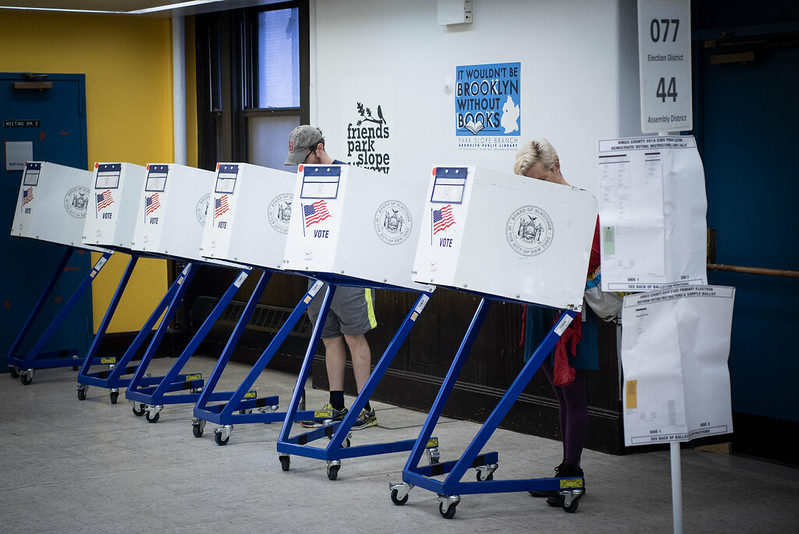
Major questions about voting during coronavirus hang in the balance (photo: Michael Appleton/Mayor's Office)
As the American people hunker down under a patchwork of evolving emergency orders and health directives, our communities are grappling with extraordinary circumstances disrupting and reorienting our lives and the economy. To flatten the curve of community spread during the increasingly deadly COVID-19 pandemic, Governor Cuomo has placed New York on PAUSE; Health officials have issued stay-at-home and social distancing directives; schools, playgrounds, and non-essential facilities are closed. Further restrictions may be imposed. The duration uncertain.
But when it comes to the fate of civil rights during states of emergency, historically the paradigm is less uncertain—there is an irresistible tendency across the globe for authorities to suspend the normal order in the name of imminent, amorphous threats of unknown duration, leading to the incremental curtailment of freedoms that we take for granted (like unfettered travel, transportation, assembly, and enterprise to name a few). The new normal makes prioritization of due process seem quaint, but it is even more critical when the exigencies of the moment impose security measures that inadvertently raise old voter-access hurdles to new, perhaps insurmountable heights.
In this case we can dispense with skepticism over the emergency itself. The pandemic is most certainly real. But already, COVID-19 has scrambled our democratic process. The Democratic National Committee has postponed its convention as 15 states are postponing 2020 primaries and some are adjusting voting policies so residents aren’t forced to choose between safety and casting a ballot. That’s the goal.
Now that Governor Cuomo has postponed New York’s April presidential primary and several special elections until June, and gone even further to implement universal absentee ballot access by executive order due to the coronavirus concerns, there is a timely opportunity to rebalance and calibrate reasonable access to civil rights for the moment we are in—a perpetual state of emergency during pivotal 2020 elections. To do so, policymakers in Albany and administrators at the State Board of Elections and our 58 county boards are grappling with at least three significant voter access questions.
First, what changes will need to be made to the traditional election day footprint, from polling place siting and layouts to staffing, to comply with public health directives that will continue to evolve? Second, is there a feasible, fair, and secure way to expand and scale New York’s traditionally limited vote-by-mail program as an alternative to voting in person? And third, what role should New York’s new nine-day early voting period play in calibrating this balance between public safety and voter access?
As counties prepare for consolidated June primaries and the 2020 general election, they do so amid much uncertainty about the trajectory and time-horizon of the COVID-19 pandemic. Will this all be a distant memory by late June? Will the pandemic be with us in November, depressing turnout and spreading even further, as occurred in the 1918 midterms?
Without the benefit of hindsight, policy-makers must plan for a circumstance where it may be impossible to staff or unwise to deploy the traditional sprawling election day footprint, with voters assigned to one of thousands of polling places across the state, many of which are sited in facilities deemed too dangerous or vulnerable to be open to the public today, and based on siting schematics and occupancy assumptions unworkable under the public health directives currently in place.
While we are eager to embrace modern, tech-based approaches to our antiquated voting laws that would obviate much of this conversation, mobile voting is in its infancy and comes with documented and unresolved security pitfalls while perpetuating the digital divide in our communities. Moreover, without any infrastructure in place, it could be folly to roll out an entirely new and untested system now. So what tools are actually available during the present emergency?
To prepare, the State Board of Elections should develop and issue a continuity guidance, to be implemented as needed, that outlines and directs the tools counties should use to maintain access, protect public health, and responsibly reduce the election day footprint.
First and foremost, local administrators must embrace early voting and the vote-by-mail alternatives available as the principle means for shifting turnout density away from Election Day.
However, New York has a longstanding culture of Election Day voting and is not equipped to entirely jettison that model now. Given that reality, county boards will need to reassess siting plans and have the flexibility to consolidate and reallocate election districts, polling places, and resources, with timely notice of the changes provided to impacted voters. In some cases, alternative sites will be needed so counties can relocate polling places away from the most vulnerable facilities. Boards should adjust traditional staffing plans to account for less poll worker recruitment and apply any resources saved to boosting absentee and early voting processing capacity.
As sites are evaluated through this lens, resident voters of impacted facilities must be proactively offered viable alternatives to vote. Cleaning and preventive measures should comport with the CDC Guidance on preventing transmission at polling places, including the spacing and cleaning of equipment and high-touch areas, the use of protective gear by poll workers and provision of hand sanitizer and single-use instruments to voters. The U.S. Election Advisory Commission has also issued cleaning guidance for election equipment.
With regard to expanding and scaling vote-by-mail, the governor's new executive order is a great start, but the state Legislature should return to Albany this spring and codify a public health exception. In March the governor had signaled his approval for such an expansion in his Executive Order 202.2 as a result of COVID-19 concerns. The order permitted any voter to vote by mail “due to the prevalence and community spread of COVID-19” such that “temporary illness...shall include the potential for contraction of the COVID-19 virus” and made accommodations to streamline the application process slightly by allowing voters to apply by email or fax.
In anticipation of conducting 2020 elections in this manner, the bipartisan leadership of the Erie County Board of Elections modified its absentee ballot request form, but uniformity here is highly preferable. Beyond merely extending and expanding this order, policymakers and boards need to use this time well to responsibly address several voting rights concerns and administrative feasibility issues.
To expand vote-by-mail opportunities effectively and fairly, the State should cover the costs of return postage for applications and ballots so voters are not forced to buy stamps. Because New Yorkers have not traditionally voted by mail, they should be invited and encouraged to do so for the duration of the COVID-19 emergency. From there, things get more complicated.
Policymakers in New York have been exploring the feasibility and legality of providing every voter with an absentee ballot without the need for a request, as five states do. But those systems were built and scaled up over time, require significant state resources and advanced planning, and are not a panacea embraced by all communities. Indeed, the Brennan Center for Justice argues that “in-person voting options consistent with public health must also be maintained.”
At a minimum, the county boards should be directed to include notice about a vote-by-mail alternative ahead of each election event. Administrators should streamline ballot requests, a multistep process that often involves two or more snail-mail exchanges. To do so, boards should mail registered voters a postage-prepaid application form with a notice about the upcoming election as well as a link or QR code to permit submission of requests online as an alternative. These methods may permit boards to extend the deadline to request a ballot, and all completed ballots should be counted so long as they substantially comply with formalities and are postmarked by election day, dropped off at polling places, or curbside at the BOE and other convenient locations. Envelopes should be self-adhesive or voters could be instructed not to lick them.
Under such an approach, inactive and recently-purged voters should be sent the mailer as well, along with an affidavit (provisional) ballot if they do apply. Careful, health-based accommodations will be needed for ballot delivery to facilities housing vulnerable residents.
Other traditional voter protection considerations, like safeguards for persons with disabilities and language assistance for New York’s diverse communities take on new dimensions as more New Yorkers vote by mail, as does the absence of a tracking system for mail ballots and ballot requests. These are not new or hypothetical concerns; boards need to work hand-in-hand with the Post Office to address them.
For many reasons, expanding vote-by-mail represents part of the 2020 equation for shifting turnout density away from Election Day, along with early voting. Fortunately, New York’s early voting law took effect in 2019 and will be available to all voters across the state for nine days this June and this fall, for at least 60 hours. Most counties allow voters to cast a ballot at any site. Localities can always provide more early voting locations and hours than the law requires, and in 2019 eighteen localities large and small, urban and rural, red, blue, and purple did so for the convenience of more than a quarter-million New Yorkers who voted early. Let’s build on that success.
Long before there was COVID-19, it was obvious to most New Yorkers that directing millions of us to an assigned poll site on the single Election Day was poor policy that placed undue stress on administrators while creating hardship and disincentive for voters. In 2012, Hurricane Sandy provided another reason to avoid placing all our democratic eggs in one basket.
Enter COVID-19, and the withering arguments against early voting—against de-densifying crowded Election Day poll sites by spreading voter turnout across time and space seem ridiculous. And yet there is concern that some administrators who were lukewarm about early voting to begin with may refuse to lean into these programs now, and instead attempt to contract them.
As daunting as some of these challenges may seem, few of them are actually new. What is new is the public health emergency, the directives to social distance, and the widespread consensus in favor of remedial actions like those discussed here. Moving in this direction would increase access, fairness, uniformity, and predictability for voters, administrators, campaigns, and officials.
Doing so now, well in advance of upcoming contests, will provide administrators with as much lead time as possible to plan and scale up capacity for increased vote-by-mail processing; will provide campaigns with clear rules before they finalize voter mobilization and turnout strategies; and will allow community-based organizations to educate the public about the changes. Together we can protect public health and exercise our rights, but the time for the State to act is now.
***
City Council Member Ben Kallos represents parts of Manhattan. Jarret Berg is the co-founder of Vote Early NY. On Twitter @BenKallos & @JarretBerg.
***
Have an op-ed idea or submission for Gotham Gazette? Email This email address is being protected from spambots. You need JavaScript enabled to view it.
The Coronavirus is Contributing to Environmental Unconsciousness, But Could Set the Stage for a Just Transition
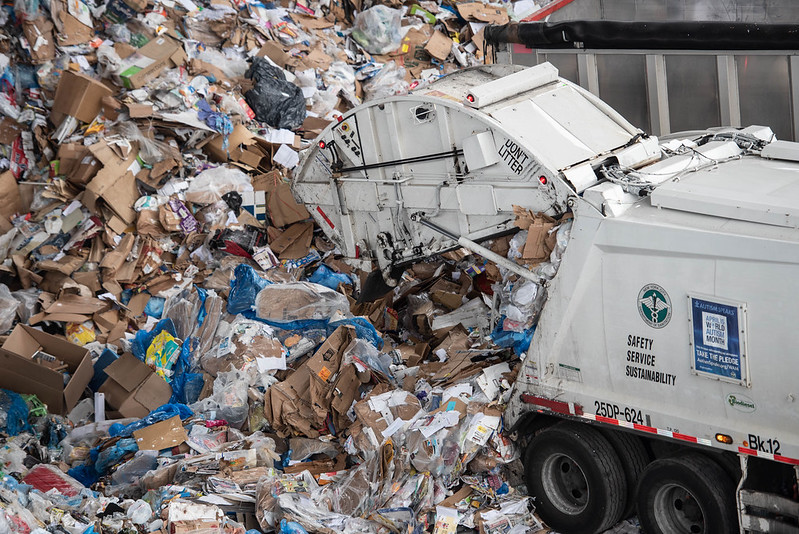
Coronavirus presents an additional challenge & opportunity (photo: Michael Appleton/Mayor's Office)
Our atmosphere is getting a breath of fresh air, but it’s not because of the Paris Agreement or any political awakening to the climate crisis. It’s because of the new coronavirus, COVID-19. Yet even as emissions fall and we put our highly-carbonized business-as-usual on pause (from fewer people and planes flying to less driving and overall industrial activity) and air quality in certain regions rises, many New Yorkers and other Americans are living increasingly disposable and energy-intense lives that will inevitably have significant impacts on our environment, while plotting our post-pandemic return to an unsustainable prior status quo.
Troublingly, the long-term effects on environmental quality of COVID-19 seem harder to quantify, but it already seems clear that if this pandemic is a test of our environmental and climate commitments, we’re failing.
Certainly, coronavirus is an “environmental wake-up call.” This pandemic is generating the panic we need to tackle the climate emergency. My fear, though, is that by lauding temporarily falling emissions, we’re forgetting that we need to tackle the wasteful practices that have become integral to our daily lives—especially in New York City, where we generate over 3 million tons of waste annually (much of which is not actually trash).
Our dependence on disposable products and on disposability more broadly has immense consequences. If this is a wake-up call, we have to account fully for how our response to coronavirus impacts the planet and all of the life it supports. This isn’t just about surviving COVID-19; it’s about building a more sustainable and equitable society in the aftermath.
Despite vast backlash against plastic straws and New York’s recent plastic bag ‘ban,’ it seems that single-use products are back in style. With policies that mandate restaurants provide only takeout or delivery and concerns around touching solid surfaces that may hold residues of COVID-19, many of us are feasting out of plastic containers and stockpiling plastic bottles of everything from Purell to hair conditioner. From trying to follow public health advice as best we can, which often means wearing latex gloves and now, face coverings, to sanitizing our countertops using spray and paper towels, sterilizing our homes almost necessarily seems to translate into living unsustainably, even as it understandably reflects an important dedication to keeping ourselves and our loved ones healthy. We understandably forget about reducing, reusing, and recycling all too easily when we feel that any product kept too long or touched by too many hands may lead to our infection.
Our pandemic behavior has a clear consequence: trash. A lot of it. Think about every container, bag, wipe, paper towel you used once and tossed away this week—and how many other New Yorkers probably did the same. No doubt, it will contribute to landfills already overflowing with municipal solid waste or eventually, wind its way into the ocean, where it may join one of the world’s gyres of marine debris, like the Great Pacific Garbage Patch, and later, line the stomachs of marine life mistaking it for a meal. For those privileged enough not to live near the places our trash ends up, this great amount of waste may not pose an imminent concern. But along with the broader harms it poses to the environment, it will undoubtedly have human consequences, especially for already vulnerable communities. Landfills and hazardous waste sites in the United States are disproportionately located in communities of color and low-income communities. Trash is never just a question of the environment; it’s a question of environmental injustice.
Decreasing CO2 emissions in the short-run doesn’t solve our problems. In fact, as history suggests, it may only exacerbate them. Past episodes that led to similar declines in emissions, like the Great Recession, failed to have lasting effects. Meanwhile, social distancing and self-quarantine practices may encourage greater home energy use which, on net, could still lead to increased CO2 emissions. And, of course, with COVID-19 dominating the global political agenda and media headlines, there appears to be far less space for talk of climate change, undermining the political foothold gained by millions of largely youth climate activists over the last few years.
While we can’t be sure exactly what COVID-19 will ultimately mean for our planet, we can already see that it will not be good news for our current economy. With stock prices dropping and unemployment rising, there is a clear imperative to think about how our government spends its limited funds on both national and local levels. Will we rebuild the same vulnerable economy or support a just transition? Instead of bailing out fossil fuel companies, for instance, we should invest in creating new jobs in the clean energy sector. Sometimes, a shock to our stagnant system is just what we need to motivate us to transform it.
If we’re taking our planet and our communities’ health seriously, then we can’t forget about sustainability in the midst of this pandemic and we certainly can’t return to business as usual when it subsides.
New Yorkers (and all others) need to use this time as an opportunity to reevaluate our choices as consumers and more than that, to critically question a system that drives us to live in ways that disproportionately tax and damage the earth’s finite resources. What we need now are bolder climate and environmental policies. That means transforming society and the economy, which we now will have an even clearer, more pressing opportunity to do.
It means using our emergency response to invest in local and sustainable business models that can uplift communities, build resiliency, and support a regenerative economy. More immediately, it means finding ways to stay safe and healthy without depending upon many of the disposable products imperiling our futures.
***
Ilana Cohen is a climate activist. On Twitter @ilanabana.
***
Have an op-ed idea or submission for Gotham Gazette? Email This email address is being protected from spambots. You need JavaScript enabled to view it.
Governor Cuomo: Act Now to Protect New York City Electric Grid Amid Coronavirus Threat
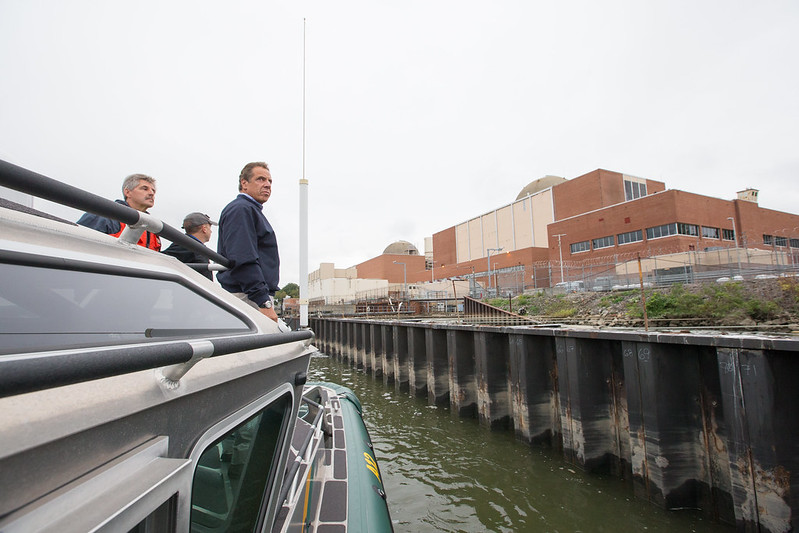
Governor Cuomo at Indian Point (photo: governor's office)
Dear Governor Cuomo,
This letter is to alert your Administration and the City of New York that an unforeseen consequence of the coronavirus (COVID-19) pandemic is its likely impact on the reliability of the electric grid serving the New York City metropolitan area, and actions needed to be taken now to reduce these risks.
Blackouts anywhere/anytime are at best an inconvenience, but today they dramatically worsen the angst and economic pressure already being felt across the nation. In New York City, the loss of electric service has unusually dire consequences due to its densely populated urban setting.
With the near certainty that this pandemic will spread further in the metro area, a blackout would profoundly increase risks to the public’s safety and health - and could lead to panic.
We know that your primary concern is the health and safety of your constituents and that it was the key consideration in many of your recent decisions, from schools to bars to elections. In this current environment, and especially over the next few months, the State also needs to be especially vigilant in protecting the electric grid. Any actions that might degrade the grid’s reliability must be avoided.
Consequently, we urge you to postpone the scheduled permanent shutdown of the Indian Point Unit 2 (IP-2) nuclear facility later this month. An agreement reached in 2017 calls for shutting down IP-2 in April 2020. However, it will now coincide to when New York City (and perhaps State) may be facing maximum stress from the pandemic. Thanks to a prescient clause included in the 2017 agreement, the shutdown can be delayed in the event of an “energy emergency.”
We ask you to invoke this emergency clause and keep IP-2 in operation or, at a minimum, put it into a standby mode with its operating license intact and the ability to be brought back online quickly if needed.
The electric power market in downstate New York is exceptionally complex. Shutting down IP-2 (it generates 25% of downstate New York’s power) will significantly increase that region’s already high dependence on gas-fired electrical generation. These gas power plants are all fueled via a constrained long-distance transmission network that may experience problems over the next few months. There has been strong public resistance to expansion of the already-constrained gas pipeline system. Shutting down IP-2 put will cause immediate and significant increases in volumetric demand on that system as increased gas-fired generation fills in for the nuclear unit’s no-longer available power.
Unprecedented drops in the price of oil/gas are putting tremendous financial pressure on oil and gas companies, some of which may have to cease fracking operations and reduce workforce, putting further strain on the operation, upkeep, and maintenance of the interstate gas transmission system.
With the advent of the coronavirus and recent disruptions in the oil and gas industry, New York City will likely face large unanticipated swings in electrical demand and supply, availability of fuels, manpower, and other resources. We must act now to minimize potential problems.
The energy emergency provision should be utilized ASAP to assure that there is sufficient time to maintain IP-2’s generating capacity over the next few months. Because of the way nuclear plants are designed, the reactor’s core still has ample fuel and can be configured to run several additional months if needed before new fuel is required. However, the logistics may take some time to work out and keeping the plant in operation will require coordination with the plant’s owner, Entergy, and possibly the NRC. We are not trying to be alarmist, but believe it is within your power to avoid a potentially severe problem if you act now.
We are a group of scientists, engineers, and professionals offering to help New York State optimize its energy resources and policies. Please feel free to contact us if you have any questions or concerns, as we are here to assist you and the various agencies and authorities entrusted with providing safe and reliable electricity in New York.
Sincerely,
Gary Krellenstein; Philip Kahn, PhD; Keith Schue; Dietmar Detering, PhD; Keith Rodan; Isuru Seneviratne; Leonard Rodberg, PhD; & Herschel Specter, PE
***
Have an op-ed idea or submission for Gotham Gazette? Email This email address is being protected from spambots. You need JavaScript enabled to view it.
Coronavirus Crisis Worsens Challenges Faced by Women and Reaffirms Need to Elect More Women to Office
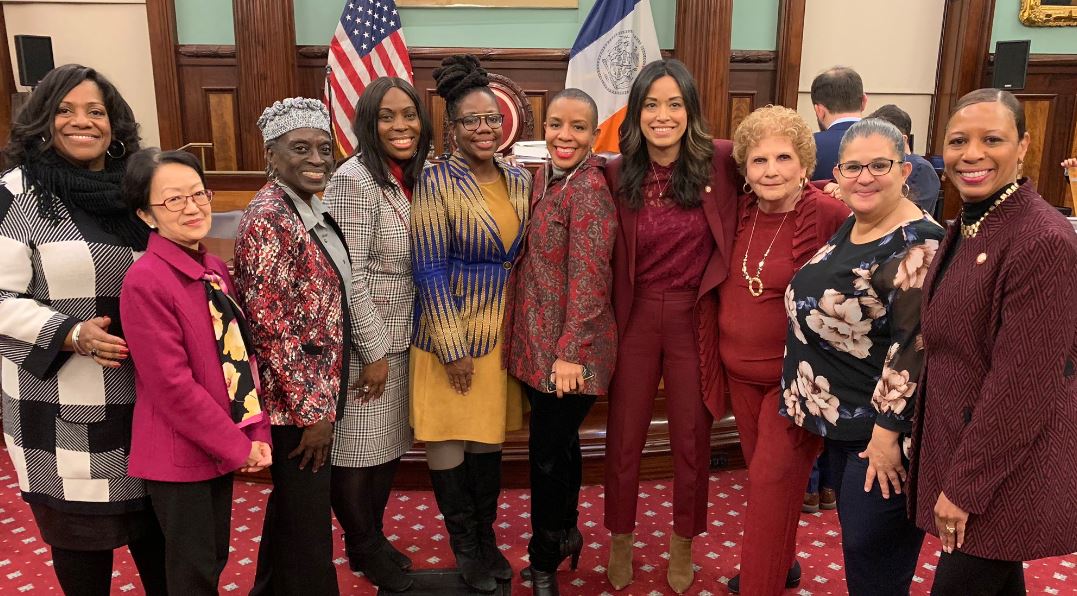
Most members of the New York City Council Women's Caucus (photo: @vanessalgibson)
The coronavirus pandemic amplifies many of society's systemic gender inequalities, magnified by race, class, and immigration status. Women, who have continued to carry the burdens of “women’s work” into the 21st century, are disproportionately impacted by this crisis, and women of color in New York City will fare the worst.
As nearly 50 women candidates running in the 2021 city election cycle and other women leaders, we have joined together to call attention to these issues and call for immediate and long-term solutions. And it is only by electing women to office will we enact the policies needed to address these inequalities.
In New York City, women make up 52% of the population, 60% of the voters, but only 24% of the City Council. Data shows that women, more than men, tend to look at the bigger picture, the entire family, and the community, and this is what we need right now. Representation matters.
The reality is stark for women during this crisis. Women, and overwhelmingly women of color, are far more likely to work as daycare and early childhood educators, house cleaners, home health aides, and nannies. All of these positions are at high risk and many women will be unemployed throughout the duration of this crisis.
With schools closed, women who are actually able to work from home are balancing working full-time while also homeschooling, tending to elders, managing family health care, and doing the invisible work of maintaining the household. It may be 2020, but the reality is that in many families women are still the primary caregivers. Additionally, 80% of single-parent households are headed by women, for whom the pressure is even higher.
Women who are small business owners, work in service or retail, or drive taxis are also seeing their livelihoods suffer. And women’s careers will not bounce back as soon as the crisis ends. We know from previous infectious-disease outbreaks that men’s incomes recover faster after the outbreak, while the impact on women’s careers can last for years.
This crisis disproportionately impacts women, particularly women of color, in other ways as well. New moms who rely on Women, Infant & Children (WIC) can’t get the food they need because only certain items 'qualify' for WIC and many of these products sell out quickly in the rush to hoard.
The number of women and children at risk of domestic and sexual violence increases as families are shut-in together under stress. Women and children also make up the largest portion of people experiencing homelessness, and shelters are not equipped to contain the spread of the virus.
Women's health is also on the line. Texas and Ohio halted abortions, classifying them as a non-essential medical procedure. Women about to give birth are receiving mixed messages about whether they will be able to have partners with them in the delivery room (New York has clarified that they can have a non-sick partner or other support person). Most nurses are women risking their health on the frontlines to care for those who are sick and then going home to care for their families.
These issues aren’t new, but COVID-19 will make the scale of the disparities stark. We need immediate action, including financial support paid directly to families, including undocumented families, to help weather this crisis. In the short-term, hotel rooms empty due to the crisis are a safer solution for those experiencing homelessness, and temporary shelter for women and children who experience abuse.
We should get rid of the red tape on WIC-approved necessities so parents can purchase what they need based on what's available in the stores. We must ensure adequate protective gear is available for our health care workers, including home health aides and women working in nursing homes.
Longer-term, our policies need to work for the people who are doing the work with solutions like paid family leave, universal family care, and universal, affordable healthcare accessible to all, regardless of immigration status.
In 2021, we have the opportunity to elect new leaders to the two-thirds of City Council seats that will be open due to term limits. There are dynamic, competent, exciting women running for all of these seats. We have a chance to reshape our city leadership and the way the city works for women, families, and all New Yorkers. Coronavirus has magnified just how important that is.
***
This op-ed has been co-signed by the following 50 members of 21 in ‘21:
City Council Member Helen Rosenthal, Chair of the Committee on Women and Gender Equity and New York City Comptroller Candidate
Sara Lind, City Council Candidate District 6, 21 in ‘21 Interim Executive Director
Lynn Schulman, City Council Candidate District 29
Crystal Hudson, Kings County Committee Representative 57th AD
Jessica Haller, City Council Candidate District 11
Rebecca Lamorte, City Council Candidate District 5
Kim Moscaritolo, City Council Candidate District 5
Tricia Shimamura, City Council Candidate District 5
Kristin Richardson Jordan, City Council Candidate District 9
Sheba Simpson, City Council Candidate District 9
Johanna Garcia, City Council Candidate District 10
Yudelka Tapia, City Council Candidate District 14
Ischia Bravo, City Council Candidate District 15
Elisa Crespo, City Council Candidate District 15
Althea Stevens, City Council Candidate District 16
Amanda Farias, State Committeewoman 87th AD, City Council Candidate District 18
Darlene Jackson, City Council Candidate District 18
Jaime-Faye Bean, City Council Candidate District 22
Julia Forman, City Council Candidate District 26
Heajin (Hailie) Kim, City Council Candidate District 26
Kerryanne Burke, Esq., City Council Candidate District 27
Nantasha Williams, City Council Candidate District 27
Monique Charlton, City Council Candidate District 31
Felicia Singh, City Council Candidate District 32
Elizabeth Adams, City Council Candidate District 33
April Somboun, City Council Candidate District 33
Sandy Nurse, City Council Candidate District 37
Alexa Aviles, City Council Candidate District 38
Whitney Hu, City Council Candidate District 38
Shahana Hanif, City Council Candidate District 39
Nicole Hunt, City Council Candidate District 39
Cecilia Cortez, City Council Candidate District 40
Mercedes Narcisse, City Council Candidate District 46
A. Dimple Willabus, City Council Candidate District 46
Amoy Barnes, City Council Candidate District 49
Marjorie Velazquez, District Leader 82nd AD Part B
Olanike Alabi, State Committeewoman, District Leader 57th AD
Sandra Ung, State Committeewoman 40th AD
Amber Adler, Chair of Neighborhood Advisory Board 15
Indiana Porta, Esq., Community Advocate and Legislative Attorney
Kim Watkins, Manhattan Borough President Candidate
Dianne Morales, Mayoral Candidate
Jordan Jayson, Democratic Strategist
Amelia Adams, 21 in ‘21 Board Chair
Yvette Buckner, 21 in ‘21 Board Vice Chair
Melissa Lirtsman, 21 in ‘21 Board Member
Camille Rivera, 21 in ‘21 Board Member
Dr. Debbie Almontaser, 21 in ‘21 Board Member
Elyse Byxbaum, 21 in ‘21 Board Member
Heidi Sieck, 21 in ‘21 Board Member
***
Have an op-ed idea or submission for Gotham Gazette? Email This email address is being protected from spambots. You need JavaScript enabled to view it.
Bail Reform Rollbacks are a Dangerous Failing of Moral Courage

State lawmakers wrongly bowed to law enforcement pressure on bail reform, the author writes (photo: governor's office)
Predictably, and disappointingly, the New York State Legislature rolled back last year’s historic and hard fought bail reforms at the eleventh hour. It was an act of cruelty after providing our communities the briefest of reprieves following the historic enactment of bail reform just three months ago, on January 1.
Less than two minutes of floor debate allowed racists and prison profiteers to win in their crusade to diminish the reforms, condemning thousands more black, brown, and poor New Yorkers to our broken system of mass incarceration. While the debate was over quickly, the consequences will be felt for generations.
The changes decrease public safety and increase New York’s role in mass incarceration. More misdemeanors are back on the books as eligible for money bail, as are several non-violent felonies like grand larceny in the first degree and criminal possession of a controlled substance in the first degree. In practice, the law blames poor people for the conditions our governments impose on them, allowing factors like lack of stable housing and employment to increase the likelihood of destabilization, arrest, and pretrial detention.
District Attorneys will almost certainly exploit the expansion of bail eligible cases, maximizing their ability to jail the poor pre-trial by upcharging and overcharging incidents as hate crimes or domestic violence. Worse, the rollbacks will result in at minimum hundreds, possibly thousands, more to be incarcerated — possibly preventing the supposedly imminent closure of the Rikers Island jails.
From the moment the clock struck midnight on January 1 and New York’s bail reforms went into effect, critics of the changes and defenders of the status quo went on the attack, determined to undo key measures of justice. They painted a false picture of chaos and anarchy throughout the state, perpetuating the assumption that not forcing legally innocent poor people to remain in jail would make our communities unsafe.
The myth that bail reform would lead to lawless anarchy was absurdly false, but effective at creating a bogeyman. The reality is the now-rolled back bail laws worked. For every cherry-picked, misrepresented case in the media, thousands of black, brown, and poor people were being released pending trial like their wealthy, white counterparts had been for so long. They returned to court, and rates of violent crime did not increase. Lives were saved. Families were spared the intergenerational violence and trauma of incarceration. Housing and jobs were kept. Communities are safer because people with mental health and substance use issues had opportunities for treatment, instead of suffering the cruel, dual punishments of inadequate healthcare while locked in a jail cell.
If the opposition’s aim was merely to create safe and healthy communities, they would be working alongside criminal justice reform advocates to expand public health interventions, affordable housing, education and community-based programs. Opponents of bail reform had a different aim than public safety. Their goal is to reclaim more control over the justice system that remains filled with black, brown and poor New Yorkers. This twisted investment in systemic racism and addiction to punishment comes at the cost of real human lives.
There are legislators who will look at this archaic return to yesteryear and try to tell you the rollbacks aren’t as bad as it could’ve been. That they saved us from “dangerousness” being added to the books, but we know better. One missing tool in a toolbox of oppressive measures isn’t enough to stop a system that is swallowing entire communities whole.
Do not be fooled. There are no heroes here. Any call that these changes are minor is an act of deceit. When taken from the state Capitol building and brought into our criminal courtrooms, the increase in incarceration will be anything but minor.
What is happening here in New York isn’t new. When slavery was abolished, racists adapted and we were met with the Black Codes and convict leasing. When that system as it existed “fell” we eventually received mandatory minimums, three strikes, stop-and-frisk, and broken windows policing. It is no different today. As we fight to dismantle our racist oppressive systems, our opponents are working tirelessly to build new supports to continue to prop them up.
In these recent state budget negotiations, New York’s elected officials had the choice to stand strong and defend bail reform. Instead they chose to retreat and uphold a system of mass punishment -- based on the lies of the very people who directly profit from incarceration and state violence against black, brown, and poor people.
Governor Cuomo and the New York State Legislature failed the test of moral courage.
***
Tiffany Cabán is a national organizer with the Working Families Party. On Twitter @tiffany_caban.
***
Have an op-ed idea or submission for Gotham Gazette? Email This email address is being protected from spambots. You need JavaScript enabled to view it.
The $2.1 Trillion Coronavirus Relief Bill - What’s In, What’s Not, What’s Next?
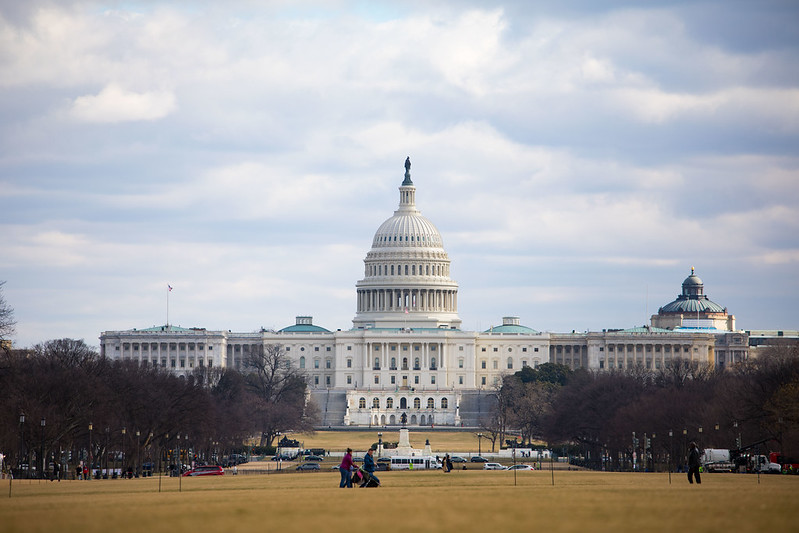
Federal aid to New York is coming, but how much (photo: Benjamin Kanter/Mayor's Office)
On Friday, the president signed into law The Coronavirus Aid, Relief, and Economic Security (CARES) Act. The $2.1 trillion CARES Act provides significant support for people, states, the health care system, small businesses, and yes, big businesses too.
The historic legislation is the third in a series of swift responses by Congress to ameliorate the immediate and unparalleled toll of the COVID-19 pandemic. According to early estimates, New York State is set to receive $15.1 billion in federal relief, including in human services, education, homeland security, housing, transit, independent agencies, and more.
We’ll dig deeper into the full range of relief for human services in the coming days, but below are some of the key provisions – some of which will temporarily make whole those whose jobs were sacrificed to protect the public’s health. However, there are serious concerns with respect to housing, cash assistance, nutrition, and state relief. Moreover, many programs will be arbitrarily cut off instead of automatically being tied to economic indicators that signal a recovery is truly underway.
Unemployment Insurance (UI)
There’s a lot to like in the UI provisions, including: $1 billion in emergency grants to states and 100 percent federal funding for extended benefits in states with an unemployment rate above 10 percent; a significant expansion of eligibility to include part-time workers, independent contractors, the self-employed, and so-called gig economy workers such as drivers for taxis, Uber, and Lyft; an additional $600 per week increase in UI benefits for up to 4 months; an additional 13 weeks of UI (beyond the number of weeks each state provides); and full funding for states with existing work-sharing programs, such as New York.
Cash Payments
Eligible adults will receive a one-time payment of $1,200 and eligible minors under the age of 17 will receive an additional $500. Amounts will be phased down above a threshold of $75,000 for individuals, $112,500 for head of households, and $150,000 for joint filers.
It is deeply unfortunate that Congress excluded millions of immigrants and their families across the country, many of whom pay taxes and are on the front lines caring for the ill and putting food on our tables. By excluding workers who pay federal income taxes with an Individual Taxpayer Identification Number (ITIN) from receiving stimulus payments, Congress has left out more than 5 million children – most of whom are U.S. citizens.
Additionally, vulnerable populations – such as those who receive the bulk of their income from untaxed sources such as Social Security, veterans benefits, or disability benefits, and those whose incomes are so low they don’t have to file a return – will have to file a tax return. The Treasury can and should use its discretion to prioritize getting checks out as quickly as possible and ensure Volunteer Income Tax Assistance (VITA) programs are sufficiently funded to reach those who do need to file a return.
Finally, these payments do not take into account geographical differences in the cost-of-living. In New York City, for example, the full $1,200 for a qualifying individual doesn't even cover one month of median rent.
State Fiscal Relief
New York State will receive $7.543 billion through the Coronavirus Relief Fund. The Fund – available until December 21 – helps states mitigate massive budget shortfalls due to widespread joblessness, plummeting tax revenue, and an increase in human needs.
However, New York’s share is just five percent of the $150 billion available for all states, even as New York is reporting nearly half of all confirmed COVID-19 cases in the U.S. Already, New York State is forecasting $10 to $15 billion less than previously expected in tax revenue as a result of COVID-19 measures, and Citizens Budget Commission predicts up to a $20 billion shortfall in New York City revenue over the next three fiscal years. In other words, state fiscal relief is likely to be significantly insufficient. (It’s worth noting that Senator Schumer requested a much larger sum of $750 billion and has said he’s working on another relief package.)
Nutrition
Congress approved $15.5 billion to support increased participation in the Supplemental Nutrition Assistance Program (SNAP), $450 million for food banks through The Emergency Food Assistance Program (TEFAP), and provided temporary flexibility for states to expand SNAP. However, Congress missed the opportunity to modestly increase maximum SNAP allotment by 15 percent and minimum SNAP benefit from $18 to $30 per week.
Food pantries are being devastated as joblessness among low-paid and vulnerable workers is skyrocketing (as many as 750,000 may have lost their jobs in March alone).
Increasing benefits for the SNAP program would ease pressure on food banks. Furthermore, every $1 in SNAP spending resulted in $1.74 of economic activity during the depths of the Great Recession.
Housing
The CARES Act provides $4 billion for Emergency Solutions Grants to help people escape from or avoid homelessness and $3 billion for public housing operating funds and rental assistance, boosts energy assistance programs, and places a 120-day moratorium on all evictions from federally-assisted housing.
However, housing funding still falls short of existing unmet needs, let alone anticipated increases in costs from the COVID-19 crisis. Congress should follow the House’s lead by meaningfully boosting investments in rental assistance, operating support, and homelessness prevention, and by including mechanisms that take into account the impossibility of catching up on suspended rent payments that will accrue during this crisis.
Next
As COVID-19 spreads, with peak infection possibly weeks away, we face the possibility of a long-lasting and deep downturn. It is therefore urgent that Congress address legislative gaps, such as a few we’ve summarized above, in addition to a growing list of needs in child care, education, front line worker safety, testing, treatment, and prevention, income supports, and more.
***
Derek Thomas is Senior Fiscal Policy Analyst and Gaurav Gupta-Casele is Fiscal Policy Analyst at FPWA. On Twitter @dlthomasNYC & @FPWA.
***
Have an op-ed idea or submission for Gotham Gazette? Email This email address is being protected from spambots. You need JavaScript enabled to view it.
The City is Committed to Protecting Your Privacy During the Coronavirus Crisis
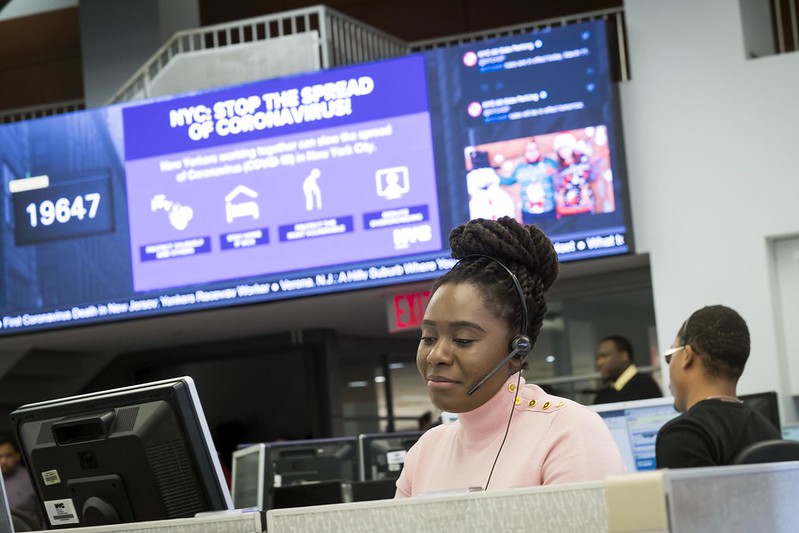
Taking coronavirus calls at 311 (photo: Ed Reed/Mayoral Photography Office)
Your personal information is just that: personal. Even during a pandemic, it’s important that we make sure that New Yorkers’ privacy is protected to the maximum extent possible, both during the emergency and in anticipation of the aftermath once the pandemic resolves.
As New York City’s Chief Privacy Officer (CPO), I am dedicated to protecting New Yorkers’ privacy. I lead a team of dedicated lawyers who staff the Mayor’s Office of Information Privacy and work year-round to safeguard individuals’ personal information. We support the work of city agencies and offices by providing information and guidance on privacy policies and best practices, and we are hard at work continuing to provide that guidance during the coronavirus crisis.
Keeping the personal information of New Yorkers private remains a priority of my office, even while the city is mobilized in a battle to protect New Yorkers against the coronavirus. Privacy protections can help aid effective emergency response.
During the COVID-19 crisis, we can ill afford to have our neighbors, coworkers, and friends unable or unwilling to come forward to get urgently needed help due to very real fears. As a privacy lawyer and a former social worker, I am particularly aware of the fears of traditionally underserved populations about privacy and unwanted government intervention. In the past, too many New Yorkers have felt excluded from or afraid of getting help from city government agencies, including individuals with criminal records, substance users, undocumented immigrants, sex workers, or individuals living with HIV, among others.
As the city responds to this crisis, we want New Yorkers to trust that, because their city government is committed to safeguarding their personal information, they can seek and receive the care and services they need, both now and in the future.
In the course of government response to the coronavirus outbreak, there may be emergency situations that require sharing of certain information in order to best protect the public’s health and safety. For example, the city must share information with the state’s Health Department and the CDC in order to track and prevent the spread of disease. And one city agency may collaborate with other city agencies to share information with the public about available social services, food, and other resources. In these circumstances, it is important for New Yorkers to understand that our office remains in close contact with city agencies and officials to provide guidance and legal advice in order to ensure that privacy remains a priority and is protected to the greatest extent possible.
We are working hard every day to ensure New Yorkers’ information is kept appropriately protected when they interact with city government. In these efforts, city agencies have taken a careful approach and shown a strong desire to work with our office during citywide emergency response. We need this kind of focus on privacy to ensure that our most vulnerable residents will feel safe getting health care and food, and receiving essential services – both for their benefit and to protect the public’s health.
For our noncitizen residents, I want to emphasize that nothing about the coronavirus response changes our laws that protect your privacy in your interactions with city government. City agencies do not and will not share medical or social services information about coronavirus patients for immigration enforcement purposes. Immigrants should feel comfortable and confident seeking help in New York City. NYC Health + Hospitals treats all who need care, regardless of immigration status or ability to pay, and does not record immigration status.
My office remains as committed as ever to protecting New Yorkers’ privacy, to ensure everyone can get the services they need and deserve.
***
Laura Negrón has served as the General Counsel of the Mayor’s Office of Operations since 2015 and Chief Privacy Officer of the City of New York since 2018.
***
Have an op-ed idea or submission for Gotham Gazette? Email This email address is being protected from spambots. You need JavaScript enabled to view it.
As Thousands of New Yorkers Face Illness and Death, the Governor Must Suspend Two-Witness Rule for Wills and Other Key Documents
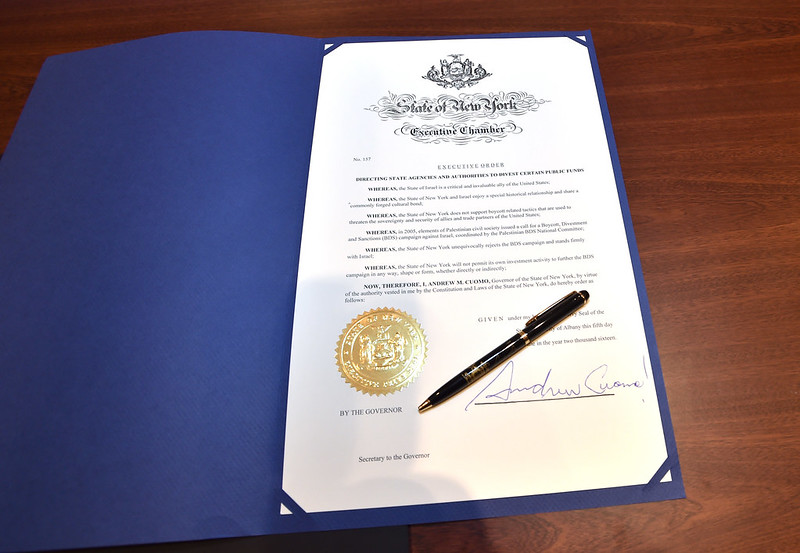
A Cuomo executive order (photo: Kevin P. Coughlin/Governor's Office)
Death is all around us and forcing New Yorkers, regardless of age, ability, or immigration status to confront our vulnerability and mortality.
Among the “acts” in a recent “This American Life” episode, writer/daughter Jiayang Fan in a “A View from the Park,” spoke of her fear and trauma at no longer being able to visit her mother in a nursing home. Fan vividly expressed her feeling of desperation because her mother has ALS and while cognitively sharp, can only communicate with her eyes, as she is a prisoner in her own body. Her mother is among the most frail and vulnerable to contracting the new coronavirus (COVID-19) and if she does, it is likely she will die. Fan, in a recent New Yorker article, also explored dying, family, and culture through the lens of hospice in China.
In another “act” in that same episode, “The Inside Game,” a producer took us inside an apartment where two parents and their young daughter were literally fighting for their lives against the coronavirus. With death staring him in the face, the father spoke of the need to get his “affairs” in order.
Even in the best of times, we need to plan for incapacity and death. With the COVID-19 pandemic bearing down on New York, such planning becomes more urgent. Key planning documents include a will, health care proxy, power of attorney, and for parents of young children, a standby guardian designation.
New York law requires that two people act as witnesses to these documents, except a power of attorney can be signed before a notary public, but an optional “statutory gifts rider” needs two witnesses. (Under the recent Executive Order EO 202.7, the power of attorney could be signed and notarized remotely.)
Yet the process of legally executing these documents would violate Governor Cuomo’s “New York on PAUSE” executive order and place the participants at risk of harm from exposure to the coronavirus.
While it is true that a will is not the only way to plan for death—for example, we can name beneficiaries on retirement accounts, bank accounts, or life insurance; we can create trusts; and we can name a person as a joint owner of bank accounts and other assets—a will is often an essential part of estate planning.
For many people, making a will can avoid family conflict, distribute property as the testator wishes, name a guardian for minor children, and express wishes about funeral and burial arrangements.
All parents of minor children should name guardians “just in case,” but parents with chronic or fatal medical conditions, or who are undocumented and vulnerable to detention or deportation, have a particularly important duty to plan for the care of their children.
Under New York law, parents who are vulnerable due to a medical condition or immigration status have the option of designating a Standby Guardian, “just in case” the parent becomes unable to care for the children due to illness, death, detention, or deportation.
A health care proxy names an agent to make health care decisions. In some ways, the health care proxy is less important, because of the NY Family Health Care Decisions Act, which allows a spouse, child, other family member, or friend to make health care decisions in a hospital, nursing home, or hospice facility.
But a health care proxy is important because it allows us to choose an agent and give individualized directions about medical treatment under certain conditions. Also, and perhaps most troublesome, health care proxies often get signed in a health care facility, and this is not a burden that health care workers should bear along with everything else.
Allowing for electronic signatures and remote witnesses for these planning documents would not sacrifice their integrity and more importantly, would prevent more New Yorkers from being exposed to or transmitting COVID-19.
Governor Cuomo should make it possible for New Yorkers to execute planning documents in this emergency by signing a new executive order that does the following three things:
One: Suspends Section 307(1) of the State Technology Law to the extent necessary to allow an electronic signature to be used instead of a signature written by hand in executing a will, health care proxy, designation of standby guardian for minor children, and the statutory gifts rider to a power of attorney.
Two: Modifies Sections 3-2.1 and 3-2.2 of the Estates, Powers, & Trusts Law, Section 2981 of the Public Health Law, Section 1726 of the Surrogate’s Court Procedure Act, and Section 5-1514 of the General Obligations Law to allow for remote witnesses for a will, health care proxy, designation of standby guardian for minor children, and the statutory gifts rider to the power of attorney.
Three: Extends to workers of “essential businesses or entities” the right to make an oral or written will under New York Estates, Powers, Trusts Law § 3-2.2, which allows oral wills without witnesses and written wills signed by the testator for those serving in, or accompanying, the armed forces, or mariners at sea.
***
Joe Rosenberg is a Professor at CUNY School of Law. On Twitter @JoeRosenbergLaw.
***
Have an op-ed idea or submission for Gotham Gazette? Email This email address is being protected from spambots. You need JavaScript enabled to view it.




